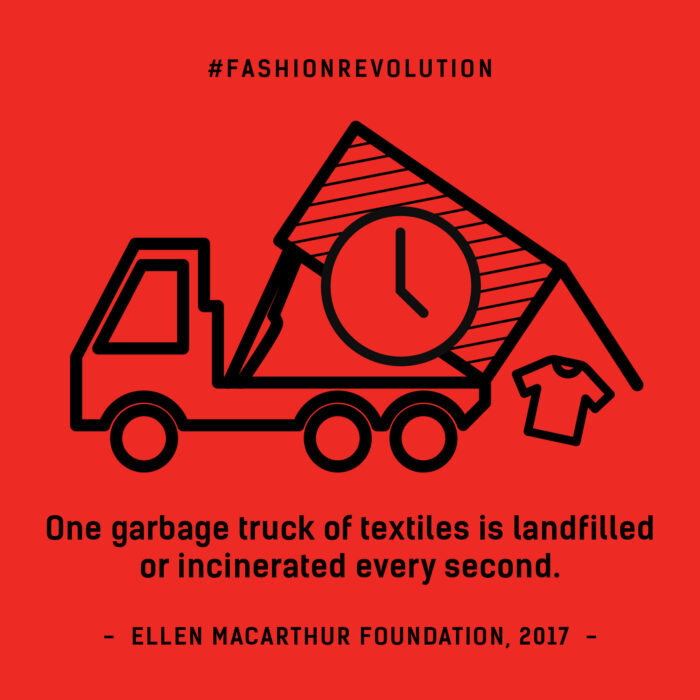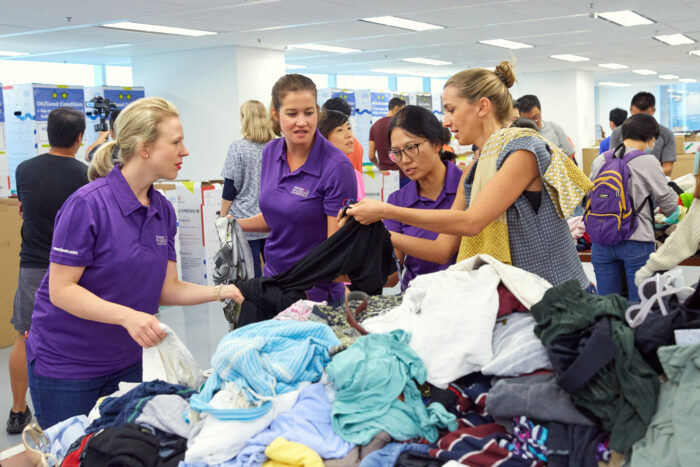Waste – is it ‘really’ in fashion?
Christina Dean is the founder of the NGO Redress and The R Collective. Here, she shares her thoughts on the scope of fashion waste and challenges us all to reduce our fashion footprint in the coming year.
Over the last few months, you would be forgiven for believing that the entire global fashion industry has united shoulder-to-shoulder to fight fashion’s waste. From the glossy Vogue and ELLE pages to the buzzy and busy digital coverage, reducing waste, upcycling, recycling and circular business models seem to be firmly ‘in fashion’.
This is all great news – for sure – but it’s not enough cause for widespread celebration.
Over the last 12 years since I, together with the formidable teams at NGO Redress and upcycled fashion brand The R Collective teams, have worked neck-deep in textile waste issues to achieve our mission – to reduce waste in the fashion industry – one thing has become clear.
We are not winning the battle. The sobering reality is that we have a long way to go until waste really is both ‘in and out’ of fashion.
Let’s take a look at what is going on around us. The number of garments produced annually has doubled since 2000 and exceeded 100 billion for the first time in 2014 and an estimated 92 million tons of textile waste is created annually from the fashion industry. Shockingly, every second, the equivalent of one garbage truck of textiles is landfilled or burned globally.

If that wasn’t an insult – let’s add another injury: textile waste is estimated to increase by about 60% between 2015 and 2030, with an additional new 57 million tons of waste being generated annually, reaching an annual total of 148 million tons.
So whilst, I delightedly salute this current push to reduce fashion’s waste, I also wouldn’t raise a glass too high, especially because when it comes to sustainability, about one-third of the fashion industry has yet to take action at all.
So how do we deal with textile waste? Clearly an enormous challenge for an industry that thrives and survives on making and selling ‘new’ clothes. The pressing issue, as we know, is to power up and implement the circular economy, in which materials are captured and re-used throughout the lifecycle.
This is no easy feat – even for the top fashion businesses who are truly focused on this area.

Soaking up fashion’s waste also can’t be left to charities and NGOs, like Redress, to sort. Redress’ direct experience handling societies’ clothing cast offs has taught us how challenging – and costly – it is. Redress’ recent Get Redressed campaign saw us collect 15 tonnes of Hong Kong consumers’ unwanted clothes, which was sorted by 419 volunteers, totalling around 2,100 work-hours in our first 24 hour Sort-a-Thon, as garment-by-garment these clothes were hand-sorted and redistributed to different local charities for onward use. This cost Redress a bomb, and some sweat blood and tears thrown in. Elsewhere, Australian charitable recycling organisations are spending a staggering AUD$13 million (around GBP7m) per year sending unusable clothing donations to landfill.
Neither can the widening array of upcycled fashion brands cope with the textile waste deluge. Through the Redress Design Award sustainable fashion design competition and the 180+ talented alumni designers who have participated, we’ve proudly witnessed designers respond to waste’s urgent call by launching their own upcycled brands, left right and centre, including The R Collective upcycled fashion brand that was born from Redress.
But even these designers certainly can’t slow the flow.
Which means it’s also down to us – normal every day fashion-wearers – to become more actively involved in championing a less wasteful industry. This doesn’t have to mean a fashion-fast or forgoing the love of fashion. It simply means a mind-switch to become more aware of all the waste that dose creep out of our closets.
So for the new year, it’s time to fall in love with our closets and to have fun with our sustainable style. From wearing, restyling and repairing the clothes that we already own, swapping and selling the clothes we no longer love or have need for, to actively looking to preferentially buy clothes made with recycled fibres, or upcycled fabrics, or more sustainable raw materials, there are many fashion-forward ways to enjoy a closet with a cause.








